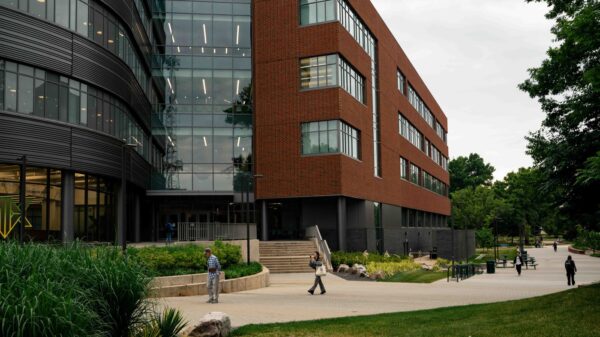New research from Arizona State University has unveiled unexpected methods by which bacteria can move without their flagella, the whip-like appendages typically responsible for propulsion. This discovery could have significant implications for understanding bacterial behavior, particularly in medical contexts where these organisms can pose a threat.
The studies, published in the Journal of Bacteriology and mBio, reveal that bacteria like Salmonella and E. coli can traverse moist surfaces even when their flagella are non-functional. In the first study led by researcher Navish Wadhwa, the team found that these bacteria utilize a process dubbed “swashing.” This innovative movement relies on the fermentation of sugars, creating tiny outward currents that propel the colony forward, akin to leaves floating along a gentle stream.
Understanding this mechanism is crucial, as it sheds light on how harmful microbes can successfully colonize medical devices, food-processing environments, and wounds. The researchers noted that in sugar-rich environments, such as mucus found in the human body, bacteria may leverage this swashing technique to spread more effectively.
Wadhwa expressed surprise at the findings, stating, “We were amazed by the ability of these bacteria to migrate across surfaces without functional flagella. Our initial expectation was that without flagella, movement would be impossible. Instead, we found them migrating as if nothing were amiss.” This revelation prompted further investigations into the metabolic processes that enable this form of mobility.
In addition to the swashing study, a second research effort examined a different type of bacteria known as flavobacteria. In this investigation, corresponding author Abhishek Shrivastava and his team focused on the type 9 secretion system (T9SS), a molecular mechanism that allows these bacteria to glide over surfaces. Instead of flagella, flavobacteria utilize a conveyor-belt-like system that pulls them forward, akin to a microscopic snowmobile.
A key component of this system is a protein called GldJ, which functions similarly to a gear-shifter. By altering the function of GldJ, researchers discovered that the bacteria could change their direction of movement. The study emphasizes the evolutionary advantages this mechanism offers bacteria, enabling them to navigate complex environments more efficiently.
The implications of these findings extend beyond microbial movement. Both studies highlight the need for new approaches in combating bacterial infections. Traditional methods often focus on disabling flagella, but as these discoveries illustrate, bacteria have evolved alternative methods for mobility.
By altering environmental factors such as sugar levels and pH, researchers could develop strategies to hinder bacterial colonization on surfaces. This could prove particularly beneficial in food processing and healthcare settings, where controlling bacterial spread is vital.
Both studies underscore a common theme: bacteria have developed diverse and surprising strategies for movement. The findings challenge existing paradigms in microbiology and suggest that a comprehensive understanding of bacterial behavior requires a shift in focus toward their environmental interactions.
Future research aims to delve deeper into the structures and functions of these molecular machines. Wadhwa and Shrivastava’s teams are committed to uncovering more about the intricate designs that allow bacteria to thrive in various environments, which could ultimately inform the development of targeted therapies and bioengineered solutions.
As our understanding of bacterial motility expands, so too does the potential for innovative strategies to combat infections and improve public health outcomes. The ongoing research at Arizona State University serves as a reminder that there is still much to learn about these microscopic organisms and their complex behaviors.







































































